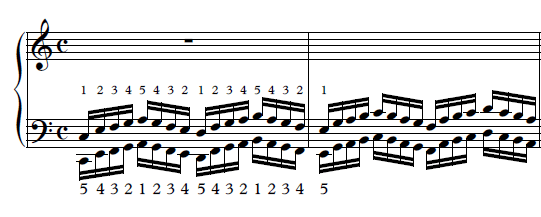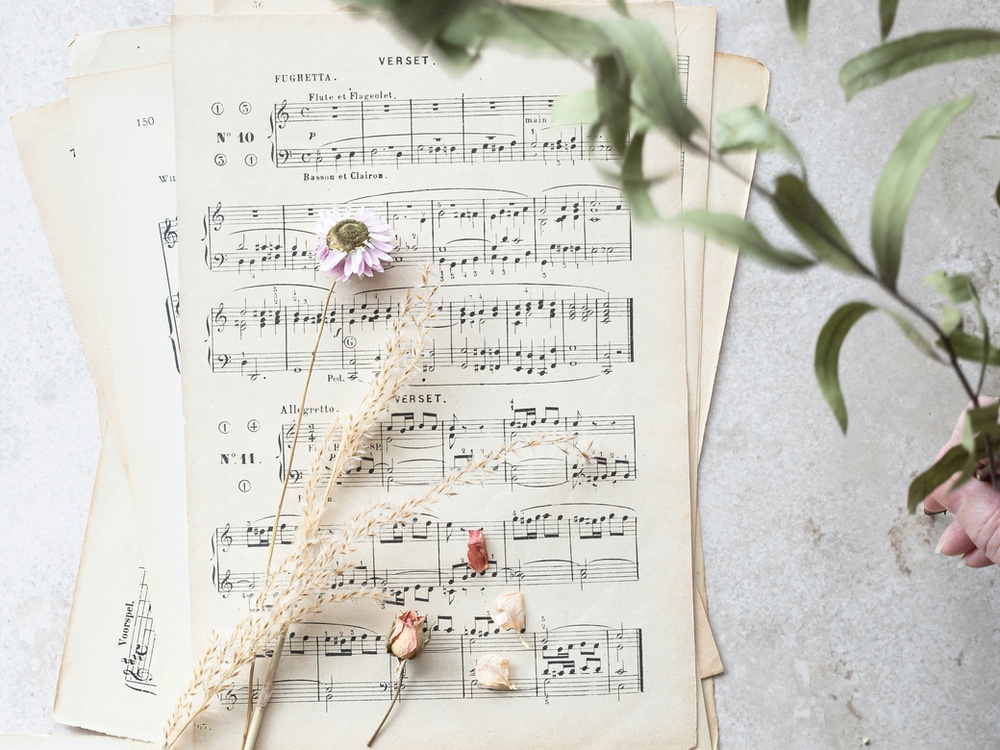Piano warm-up exercises are just as important as piano teachers and experts say they are. It’s like in any sport: If you do them, your practice will be easier. And when you regularly do your warm-ups, you’ll quickly notice a significant improvement in your playing.
How to Warm Up effectively on the Piano
Warm-ups for piano are not just there, to help you play faster. Every exercise has a different focus. In this article you’ll learn three exercises:
- One to improve your speed,
- the second one to become agile
- and the third one to increase finger fluidity.
By the way. We know that warm-ups are often skipped because they can be boring at times. So here’s our pro-tip: If you have a certain number of standard practices that you regularly use as a warm-up, change the key that you play in and/or the rhythm. You can select a key that is the same as the piece that you plan to practice. This not only changes things and challenges you in a different way, it also helps you address the key signatures and hurdles that you will encounter in that particular piece.
Warm-Up No. 1: Speed
The first exercise is by the one-and-only Hanon, a true pioneer in piano techniques. Here the focus is on finger fluidity and speed. And this excercise is not just about playing a scale up and down, but it also has some variety.
Try this exercise:
Starting with the key note (in C major a C), the second finger skips a note and goes to the third, continuing up the scale (in C major an E). Fingers 3, 4 and 5 then move up the scale (F, G, A) and then back down the scale until the first finger repeats the exercise from the next standard note in the scale (in C major a D). This phrase is repeated to the octave, and then it is played descending again.
We show you in this video:
Piano Warm-Up Exercise No. 2: Agility
This piano warm up is somewhat trickier. In this case, it’s more about agility and less about speed. But if you’ve never done this exercise, it’s best to start in C major. After all, the more key signatures there are, the more complicated it gets.
Here, the interval is a fifth. Start by placing all 5 fingers on the first 5 notes in the scale (in C major: C, D, E, F, G). What’s important, is not only that your fingers are fully relaxed, but also, that your wrist is soft.
Hit the first note (in C major a C) and hold. Now fingers 2, 3, 4 and 5 follow the usual ascending scale (D, E, F, G). And then the notes are played in descending order, while continuing to hold the first note (C):
Repeat the sequence three times. Then you hold the second finger (in C major a D) and the other 4 fingers play their usual sequence of notes. Now there is a jump between the 1st and 3rd fingers (C and E). Try to play in a way, so you don’t notice a change in rhythm when you do this jump.
Make sure that the sequence of notes continues to flow smoothly and effortlessly.
Expecially try, to keep your wrist from becoming rigid, so that you can move freely to each note. After repeating this three times, switch to the 3rd finger (in C major a D) and once again, try to strike each key consistently. Complete this exercise with fingers 4 and 5 (F and G) and play the sequence of notes back down the scale. Here, you start with the 5th finger (in C major a G) and move back down the scale, until you hit the original key note.
Piano Warm-Up Exercise No. 3: Finger Fluidity
This piano warm-up is based on finger exercise 2 and is a slight modulation, but it’s stunning to play. Because instead of moving along the scale, you will practice trills between two fingers.
Start with your hands in basic C position. Place all 5 fingers on the first 5 notes in the scale (in C major: C, D, E, F, G). The first finger hits the key note (in C major a C) and holds.
Now follow this by rapidly alternating between the 2nd and 3rd fingers, so trills (in C major: D and E). Trill a few times and then switch to the 2nd finger, which you will hold down (in C major a D), trill a few times between the 3rd and 4th fingers (in C major: E and F), and then switch to the next held note with the 3rd finger (in C major a D). Trill again, this time between the 4th and 5th fingers (in C major: F and G):
You then descend the same way you ascended, until you reach the 2nd finger. Now the exercise starts all over again, except that now you hold the 2nd finger (in C major a D) and the 1st and 3rd fingers start (in C major: C and E). Repeat this exercise until you get to the 5th finger, and then descend again, naturally playing the higher note of the trill first (in C major hold the 5th finger on G and alternately play F and E with the 4th and 3rd fingers).
Keep your wrist and arm relaxed and soft.
The best way to do this is to loosen your elbows now. And then during the exercise make sure that your wrist moves with the sequence of notes. If you do this right, this exercise will not only help you to increase finger fluidity, but also guide you to loosen your hands.
Use the PDFs we provide you with to print and practice your effective piano warm-ups every day:
As always, remember: When you practice regularly, the techniques will get easier. And at some point, you’ll enjoy doing the piano warm-up exercises in keys like H major and G flat.






